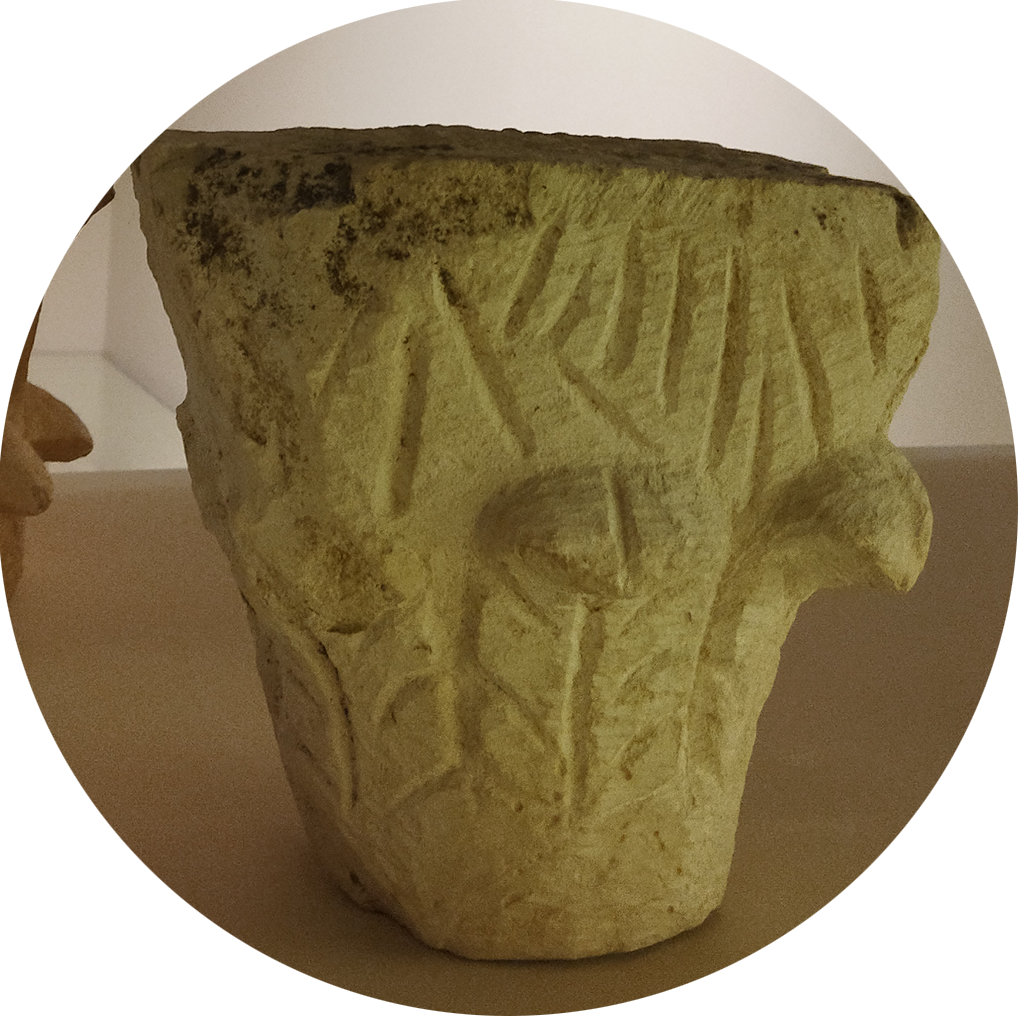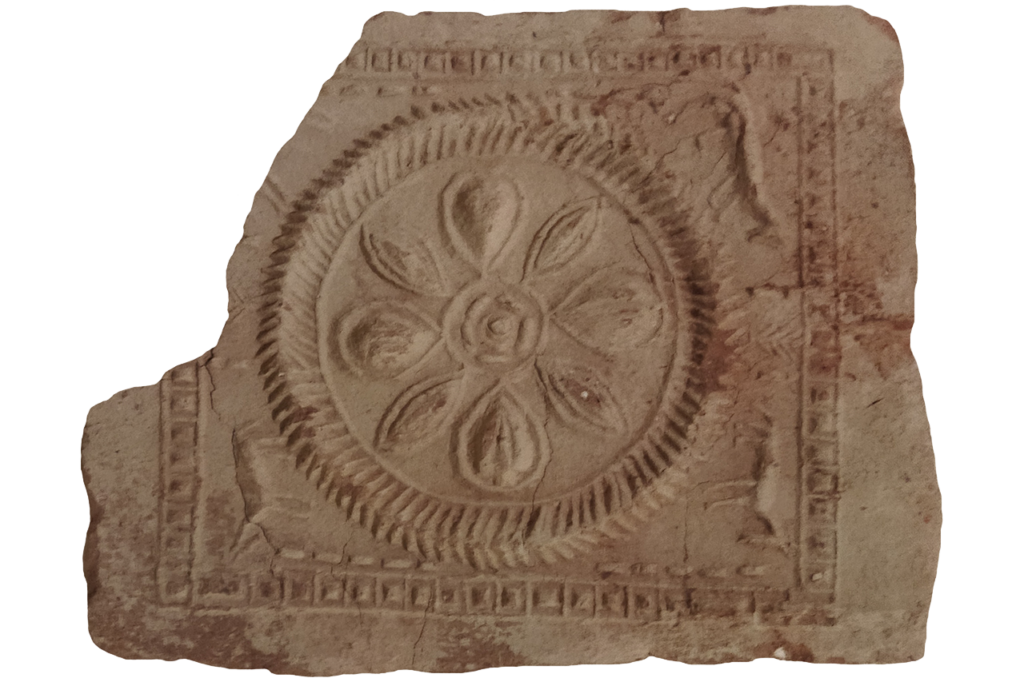
Room VII. late ancient and medieval times
Room VII, dedicated to the late ancient and medieval times , exhibits a series of archaeological remains related to the Hispano-Visigothic culture such as architectural fragments, altar feet, fibulae, , belt buckles , de cinturón, diversas various ceramic pieces ,an interesting set of decorated mold plates and, standing out above simpulum all of them, a bronze saucepan or simpulum whose handle presents an inscription engraved with the name of its owner, a well-known Christian invocation and two separate drawings of a crater and a chrysmon. The gold ring in which Sabina’s name appears as well as the reproduction of the Crismón de Baena or Ízcar which is one of the symbols par excellence of the city
For its part, the Muslim period is represented through a small set of coins , a capital and various ceramic pieces , among which a fragment of ataifor in green and manganese from the Caliphate period stands out.
Finally, other medieval pieces, especially ceramics, precede the space dedicated to heraldry , where a noble shield from the Almedina neighborhood is exhibited, another episcopal one that was from the old parish of San Pedro, one from Baena, found in the tower of Santiago, which presents the peculiarity of having the heads of the five Moors looking straight ahead and wearing a kind of pointed hat instead of the usual turbans and, finally, a circular wooden one that represents the arms of the third count of Cabra and that since the 16th century had occupied the keystone of the ribbed vault existing in the main chapel of the parish church of San Bartolomé.

Medieval copper jug and clay jug .

Visigoth mold plate in Room VII.
Baena's Crismon
In 1901, the chance discovery of an old tomb in the Ízcar farmhouse, 12 km from Baena, brought to light one of the most important pieces of early Christian art in the Iberian Peninsula. It was a 34 by 26 cm bronze piece, dated between the 6th and 7th centuries, which was on display at the National Archaeological Museum until it was stolen on July 6, 1993. Its whereabouts are currently unknown. this chrismonit contained the letters alpha and omega (first and last of the Greek alphabet) as well as two opposed circles that symbolize the cosmos (above and below), but it lacked the X and the S, the two letters of the Holy Spirit since the concept of Trinity It does not appear until the 3rd century and it is not generalized until the 10th century, so an S would later be added to the primitive chrismones, something that would not happen with the one from Baena as it had remained buried until its discovery.
A reproduction of this piece, of great importance for the Baenenses and for their Holy Week as it is the symbol of the Association of Brotherhoods, is displayed in room VII of the Historical Museum. Also in the Marinalba square, in the Almedina neighborhood, there is another large one made by the Baena Workshop School on the occasion of the VII National Days of Exaltation of Drums and Bass Drums held in the town in 1992.